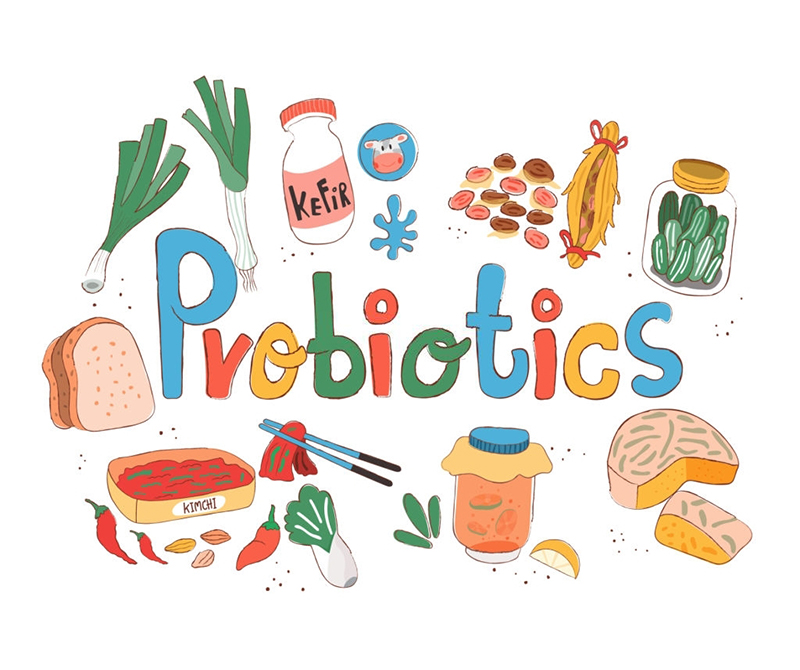1. Tempeh (tempeh)
Tempeh is a popular meat alternative made from cooked and fermented soybeans. The cooking procedure transforms tempeh into dense cakes that may be sliced into strips or cubes and grilled or sautéed. probioticseverything.comwhat can be used as a probiotic
Though tempeh is best recognized for its nutty flavor, chewy texture, and propensity to absorb marinades, its true value lies in its nutritional composition. A 200-calorie serving of tempeh has 21.1 grams of protein, or 42 percent of the Daily Value for protein, according to the USDA. It also includes all nine essential amino acids and is high in minerals including potassium, iron, and magnesium, making it a complete vegetable protein source.
2. Miso soup
You know that umami flavor you get when you eat miso soup? Miso paste, a fermented paste prepared from barley, soybeans, or rice, is responsible for all of this. Miso has about 102 to 107 colony forming units (CFU) per gram of probiotics, making it a great naturally occurring dietary source of the healthy gut bacteria, according to study.
Miso is commonly used in soups and salads, but it can also be used in marinades for seafood and meat. Just keep in mind that a little goes a long way.
3. Frozen yogurt
Yogurt is manufactured by fermenting milk and is one of the most well-known sources of probiotics. Look for “living and active cultures” on store-bought yogurt, as this suggests that the yogurt is high in gut-friendly microorganisms. probioticseverything.comwhat can be used as a probiotic
According to the USDA, fermented milk products like yogurt contain less lactose than whole milk and are therefore preferable for people who have lactose intolerance. Non-dairy milks, such as coconut milk or almond milk, can now be used to make yogurt.
4. the kefir
Kefir is a fermented milk beverage created by infusing cow’s milk or goat’s milk with colonies of bacteria called kefir grains. Kefir is a fermented milk product that originated in Eastern Europe and portions of Southwest Asia. The microorganisms in kefir convert lactose to lactic acid, giving it a sour taste similar to yogurt but with a more liquid viscosity.
Kefir also contains up to 61 different bacterial and fungal species, according to a recent research published in Frontiers in Microbiology. It’s a far greater source of probiotics than yogurt because of this. probioticseverything.comwhat can be used as a probiotic
5. Buttermilk
Buttermilk was originally created as a byproduct of the butter-making process. The liquid left over after churning butter was allowed to come into touch with microorganisms in the air, resulting in the conversion of lactose sugars in milk to lactic acid.
Buttermilk is now manufactured by combining a bacterium culture with nonfat or low-fat milk. The end result is a thicker-than-milk sour, fermented liquid. Buttermilk can be used to lighten pancake batter, and it’s the hidden ingredient in coleslaw that gives it its creamy, sour flavor.
Choose a container with a “active cultures” label to ensure that you’re eating buttermilk that’s high in probiotics. probioticseverything.comwhat can be used as a probiotic
6. Cheese
Certain cheeses, especially those made from unpasteurized milk, can be a good source of probiotics. The FDA requires that all cheese created or imported into the United States be made with pasteurized milk, which eliminates the microbial advantages of the cheese.
Unpasteurized milk is permitted only if the cheese is matured for at least 60 days. Aged cheeses, such as Parmigiano Reggiano, cottage cheese, or any artisanal cheese made from raw milk at your local farmers’ market, are high in microbial cultures that benefit the gut flora.
7. Korean kimchi
Kimchi is a Korean side dish produced by fermenting vegetables (most commonly cabbage) with numerous spices and herbs for a few days or up to a week in an airtight container. The pungent scent, spiciness, and high probiotic content of this classic fermented meal make it a popular choice. probioticseverything.comwhat can be used as a probiotic
Lacto-fermentation causes the resident micro-organism culture to break down the sugars present in the vegetables into lactic acid, extending their shelf life and preserving them.
8. Sauerkraut
The European variant of kimchi, sauerkraut, is prepared by fermenting cabbage. Sauerkraut, an essential element of German cuisine, was historically created by dry curing cabbage with salt. The resulting mixture was allowed to ferment for a few days to many weeks.
Today, canned sauerkraut and sauerkraut prepared by pickling cabbage in vinegar are both available. While all of these alternatives are wonderful, they do not provide the same gut-healthy benefits as dry-cured sauerkraut. The use of an acid like vinegar, as well as the process of canning, kills the probiotics present. probioticseverything.comwhat can be used as a probiotic
9. Pickles
Pickles must be steeped in a saltwater brine, just like sauerkraut, to provide probiotic value to your gut. Unlike vinegar, saltwater does not prevent microbes from growing throughout the fermentation process. probioticseverything.comwhat can be used as a probiotic
Making pickles at home is a simple chore that has been used as a way of food preservation for thousands of years. Pickling doesn’t have to be limited to cucumbers; carrots, maize, and even apples can all be made into pickles. probioticseverything.comwhat can be used as a probiotic
- Kombucha (fermented tea)
Kombucha is a fizzy tea created by fermenting black or green tea with SCOBY bacteria (a symbiotic culture of yeast and bacteria). Kombucha is often available in a range of herbal and fruit flavors, with a tang comparable to that of vinegar (the process of creating kombucha is quite similar to that of making vinegar).
You may produce this fermented drink at home, but make sure the SCOBY you’re using is healthy by looking for these three indicators. probioticseverything.com

